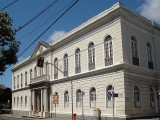Este post também está disponível em:
Português
English
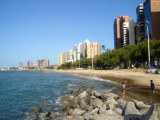
The city of Fortaleza is the capital of Ceará. The territory of Fortaleza is bathed by the waters of the Atlantic Ocean and has a tropical climate, marked by high temperatures.
Fortaleza, kindly called the “land of the sun”, the wind, the rafts and the endless beaches, has more than 7 million inhabitants and is home to the largest humorist plant in Brazil.
That must be why there are so many people laughing on the shores and in the Municipal Market of this solar city by nature.
The capital of Fortaleza is the birthplace of imposing names in literature, such as José de Alencar, who reinvented Brazil through his wild and sertanejos characters.
In addition to many talents, beautiful beaches with clear waters and year-round sunshine, Fortaleza boasts nightlife, a cultural center that values Northeastern art, award-winning restaurants, first-class hotels and a very friendly population. The capital of Fortaleza is one of the main ingredients of one of the capitals of Brazil.
These are the main ingredients of one of Brazil’s most vibrant capitals.
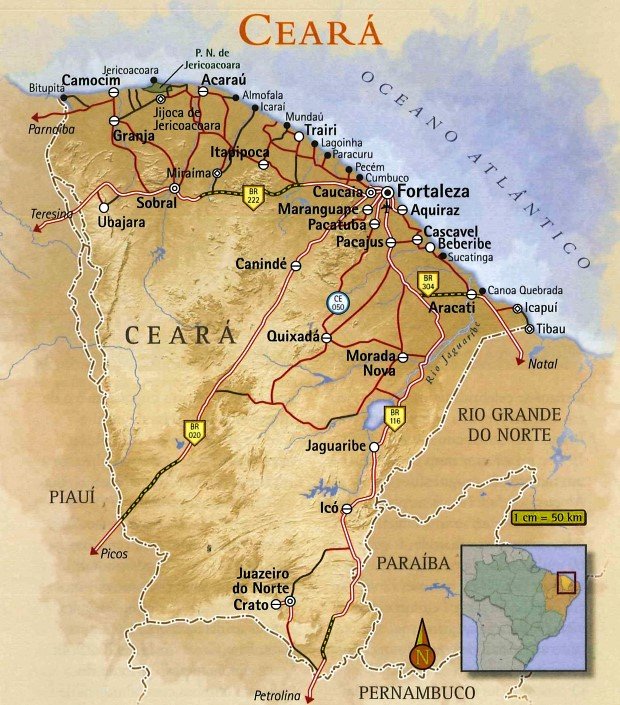
The cuisine of Ceará impresses with its simplicity; one of the most popular and typical dishes of the region, baião-de-dois is basically made with rice and beans.
Rapadura and cachaça, made from sugar cane are much appreciated in the region. There is also tapioca, stuffed in sweet or salty versions.
The tasty tropical fruits such as cashew, papaya, guava and passion fruit yield famous sweets and ice cream.
The diversity of handcrafted products shows how rich the city is. There are many artifacts, including hammocks, bags, bathing suits and leather shoes, made by hand.
Food products also have a strong presence. Lobsters, cashew nuts and cajuína are available to tourists. With so many attractions, it is impossible not to experience a trip that rescues a little of every detail of Fortaleza.
The urban beaches of Iracema, Meireles and Mucuripe, joined by the modern and busy Beira-Mar avenue, are linked to the center, where you can still see some preserved 19th century mansions.
Apart from them, little has been kept of its history, which dates back to the 17th century, when Dutch invaders built the Fort of Schoonenborch on the banks of the Pajeú River, later taken by the Portuguese and renamed the Fortress of Our Lady of the Assumption.
The building survived, transformed into the headquarters of the Tenth Military Region.
The architectural heritage is small, but there is no shortage of attractions in the capital of Ceará: in addition to the beautiful beach landscape, there are modern spaces for art and culture, shopping centers for beautiful regional handicrafts and a rich cuisine that mixes elements of the coast with those of the hinterland.
Famous for its lively nightlife, Fortaleza gets especially lively in July, when Fortal, its off-season Carnival, takes place.
Meet also tourist attractions of Ceará
Meet also the best beaches of Ceará
Videos about the Tourist Spots of Fortaleza CE


Fortaleza é intitulada de “terra do sol”, do vento, das jangadas e das praias infinitas

Drone sobre Fortaleza

Pontos Turisticos de Fortaleza e Ceará

Theatro José de Alencar no Ceará

Praia de Iracema em Fortaleza

Centro Dragão do Mar de Arte e Cultura em Fortaleza

Marco Zero de Fortaleza

Parque do Cocó em Fortaleza no Ceará

Arena Castelão no Ceará

Porto do Mucuripe em Fortaleza CE

Praia do Mucuripe no Ceará

Praia Mansa em Fortaleza no Ceará

Praia da Baleia no Ceará

Praia de Iracema no Ceará

Praia do Futuro no Ceará

Praia de Caça e Pesca em Fortaleza no Ceará

Centro das Tapioqueiras no Ceará

Centro de Turismo do Ceará
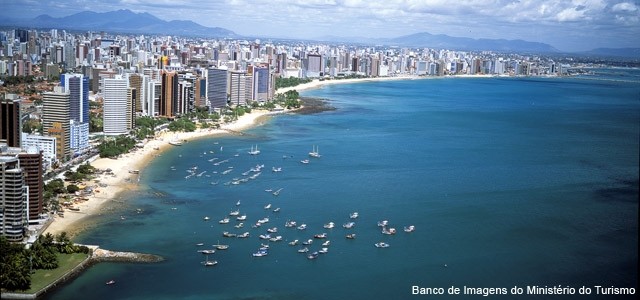
Pontos Turísticos de Fortaleza no Ceará
Tourist Spots of Fortaleza CE
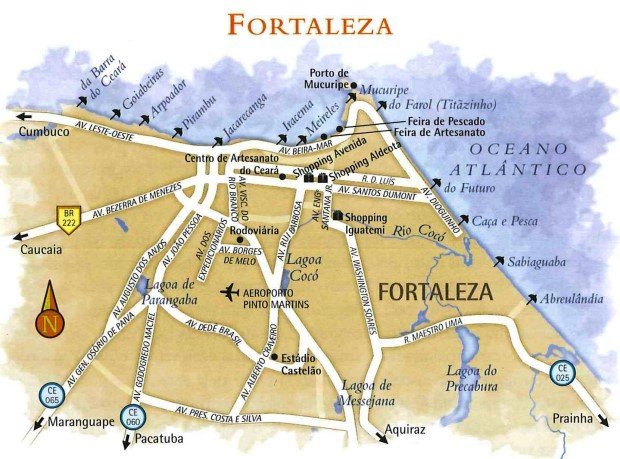
1. SEAFRONT NEIGHBOURHOODS
1.1. IRACEMA BEACH
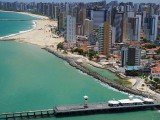
Iracema beach in Fortaleza and the most famous neighborhood of Fortaleza bear the name of the title character of one of the main works of the Ceará writer José de Alencar (1829-77).
The sea at Iracema beach is unsuitable for swimming, but the promenade is always full of people walking and running in the vicinity of the statue of the Tabajara Indian Iracema; there are also images of the famous “virgin with the honey lips”, an emblematic figure of the city, on Mucuripe beach, at the Government Palace and at the Messejana lagoon.
This stretch of Avenida Beira-Mar is even busier during sunset, which can be admired from viewpoints on the 1906 metal bridge and the nearby 1923 Ingleses bridge, platforms that advance into the sea and remind us of the time when the port of Mucuripe did not exist and ships anchored far from the shore.
The cultural life of Iracema beach is found in the historic buildings, especially those on Rua dos Tabajaras. Among the bars and restaurants there is the Bar do Pirata, which has gained fame for the lively forró it promotes on Mondays.
1.2. MEIRELES AND MUCURIPE BEACH
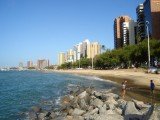
Although they are neighbors, the two beaches Meireles and Mucuripe have different profiles.
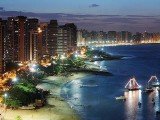
In Meireles, a neighborhood of family hotels and luxurious residential buildings, there is the most traditional handicraft fair in Fortaleza, with about six hundred stalls set up daily, starting at 6 pm, in front of the Clube Náutico Atlético Cearense.
A redoubt of the caiçara community in the middle of the urban center, in Mucuripe the program of the end of the afternoon is to taste snacks in one of the thirty stalls of the Fish Market.
The bustle in the neighborhood begins early, at 6 am, when the fishermen’s rafts return from the sea bringing fresh fish.
Mucuripe and Titanzinho, the next beach, are the surfers’ favorites.
1.3. PRAIA DO FUTURO
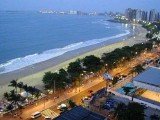
Eight of the 25 kilometers of the urban coastline are occupied by the most beautiful and cleanest of Fortaleza’s beaches.
Along its promenade line up stalls offering freshwater showers, chairs and umbrellas on the sand, as well as drinks and meals.
From 4pm on Praia do Futuro, especially on Tuesdays and Thursdays and on weekends, there are music and humor shows – it is worth remembering that Ceará is the birthplace of some of the greatest Brazilian comedians, such as Renato Aragão, Chico AIúsio and Tom Cavalcanti.
2. FORTALEZA CITY CENTER
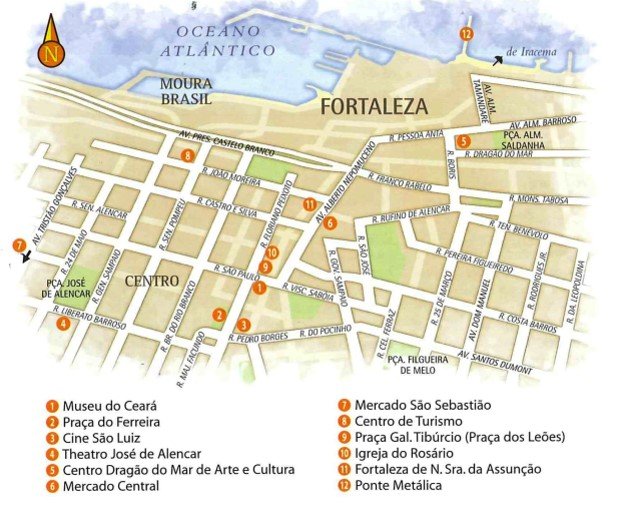
2.1. BY FOOT THROUGH THE HISTORIC CENTER
A walk through the historic center of Fortaleza can start at the Museu do Ceará, near Iracema beach, considered by some to be the most important in the city.
The nearby General Tibúrcio Cavalcante Square, or Praça dos Leões – because of the life-size bronze animals that adorn it – has existed since 1914; there are two imposing 18th-century buildings around it: the church of Nossa Senhora do Rosário, from 1755, restored by the state government, and the Palácio da Luz, which was once the seat of government and today houses the Cearense Academy of Letters.
Following is the Ferreira square, the heart of the center.
2.2. MUSEUM OF CEARÁ
The building that today houses the Museum of Ceará began construction in 1855 and was completed in 1871. It was designed to be the Provincial Assembly of Ceará, in the middle of Brazil-Empire.
Several engineers succeeded each other in directing its construction, which ended with Adolpho Herbster, who was also hired by the Ceará Provincial Government to direct urban reforms in the capital, Fortaleza, during the second half of the 19th century.
In ten rooms, it houses around 7,000 items. Its collection includes belongings of Father Cícero and original texts by the popular poet Patativa do Assaré (1909-2002), in the exhibition O mote do cordel.
The geography of the state is presented in the Ceará, Serra e Mar exhibition, while the Escravidão e Abolicionismo exhibition unravels the episode of the liberation of slaves in 1884, four years before the Golden Law. Rua S. Paulo, 51, Center.
2.3. PRAÇA DO FERREIRA
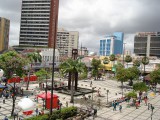
Also noteworthy are the Osvaldo Cruz Pharmacy, which has been operating since 1932 in an 1890 building, and the Ceará Palace, from 1914, home to the legendary Club Iracema, a former meeting place for high society.
Photos of these Fortaleza residents in gala attire at the beginning of the 20th century decorate the Pastelaria Leão do Sul, a classic destination for those who want to savor – standing up, as required – a thin pastry accompanied by sugarcane juice.
2.4. THEATRO JOSÉ DE ALENCAR
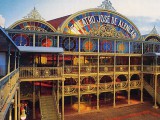
The movable stage moves forward, up and down.
Each box is named after a work by José de Alencar, also honored by a painting by the Ceará artist João Vicente on the stage arch. Listed as a historical heritage site in 1964, it offers guided tours in English and Spanish. Praҫa José de Alencar, s/n, Center.
2.5. CENTRO DRAGÃO DO MAR DE ARTE E CULTURA
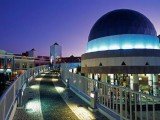
In its 30,000 square meters there are art cinemas, theater, planetarium, public library and exhibition spaces with temporary and permanent exhibitions.
At the Memorial da Cultura Cearense you can see objects and images of the daily life of the residents of the Cariri hinterland and the state’s cowboys.
The Museum of Contemporary Art of Ceará highlights, among experimental creations by contemporary Brazilian and foreign artists, the work of José Leonilson Bezerra Dias, Leonilson (1957-93).
The tour can be complemented with stops at the café, craft stores or the bookstore.
In time: “Dragão do Mar” was the nickname of Francisco José do Nascimento (1839-1914), a jangadeiro from the nearby town of Aracati who in 1881 refused to transport esc ravos on the coast of Ceará and became an icon of the abolitionist struggle. Rua Dragão do Mar, 81, Praia de Iracema.
2.6. PUBLIC MARKETS IN FORTALEZA
Two large public markets in the center of Fortaleza may appeal to those interested in an immersion in local culture.
The 559 stores of the recently renovated Mercado Central sell typical foods and regional items (Av. Alberto Nepomuceno, 199, Centro).
The central market was inaugurated in 1809, initially working for the trade of meat, fruits and vegetables. However, about 20 years later, the food gave way to the handicraft boxes.
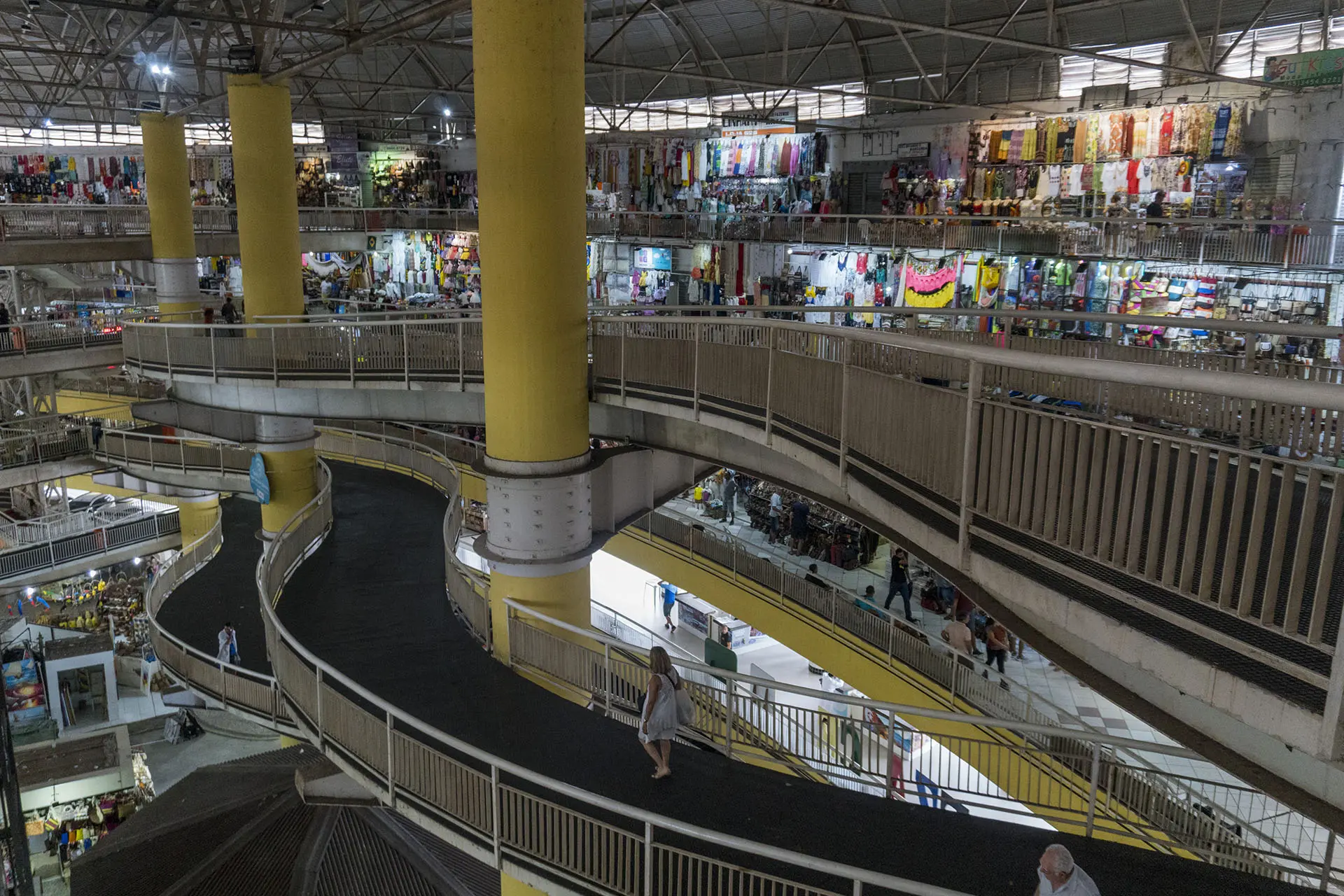
The São Sebastião Market, without any tourist pretensions and frequented by about 2,000 buyers a day, mixes fish and household utensils with colorful Northeastern fruit stalls, where you can try sapoti, pitomba and cajarana (Rua Clarindo de Queirós, 1745, Centro).
2.7. CENTRE OF TOURISM OF CEARÁ
Started in 1850 and completed only 16 years later, the old Public Prison gave way to the Tourism Center in 1973.
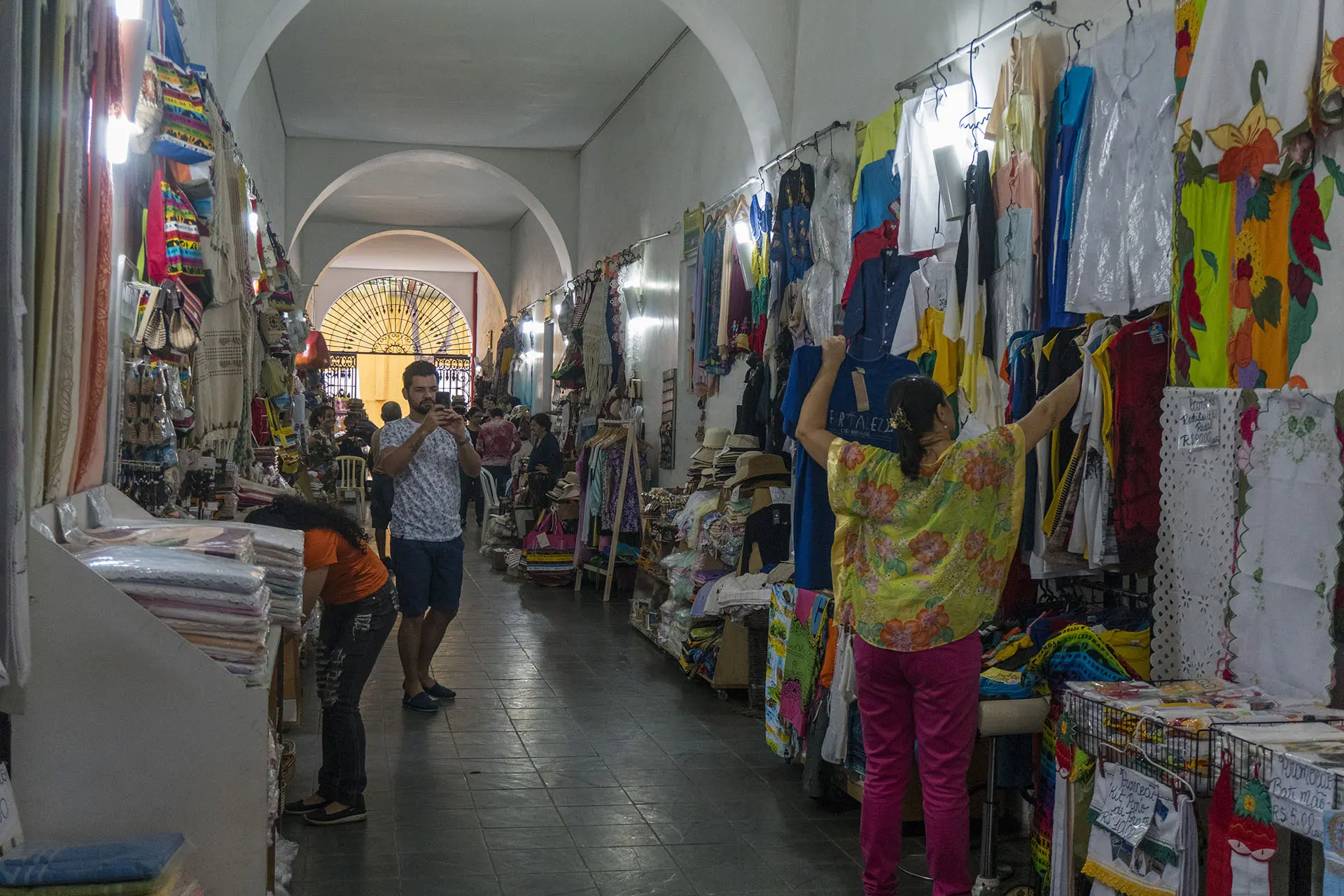
A bit of the immense culture of Ceará in a single place: it is the Tourism Center of Ceará. Ideal place to shop and learn more about local culture, especially to take a friend or acquaintance who is visiting the city.
The environment is full of regional crafts, typical delicacies, t-shirts and ornaments for souvenirs, embroidered towels of all kinds. There are also artisans making the famous colored sand bottles. In all, there are more than 100 shops and two museums: Mineirais and Popular Art and Culture.
In the past, the building that now houses the Tourism Center was the Public Prison of Fortaleza. Rua Senador Pompeu, 350, Centro, Fortaleza.
2.8. CEARÁ SHOW
Voted the second best attraction in Fortaleza by Trip Advisor, the Ceará Show is the first permanent musical in the state.
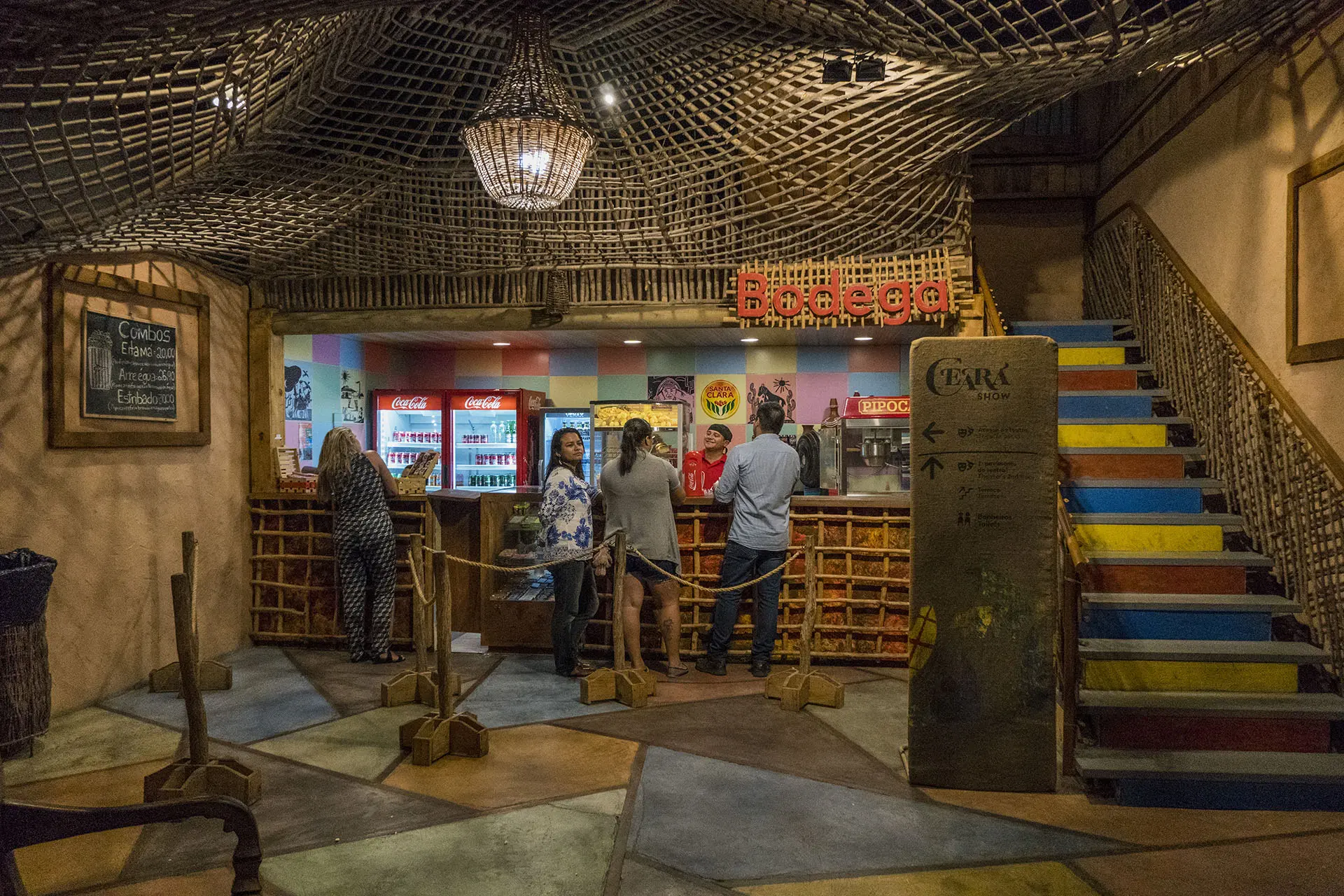
In a light and interactive way, the show tells the story of Ceará characters who are marked in memory and popular imagination as India Iracema, Father Cicero and the folkloric character Seu Lunga.
The Ceará Show takes place from Thursday to Saturday at 8 pm and Sunday at 5 pm. It is impossible not to laugh and be moved by this play that, while entertaining, is a great lesson in Brazilian culture. Definitely, it is one of the best programs to do in the night of Ceará.
3. OTHER TOURIST ACTIVITIES
3.1. CASA JOSÉ DE ALENCAR
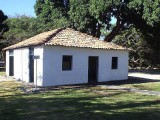
Located in a beautiful green area that houses the ruins of a mill, the space is worth a visit, although it could be better cared for and used as a museum.
Guides monitor visitors in the morning. Av. Washington Soares, 6055, Alagadiço Novo.
3.2. ART GALLERIES
The best art exhibitions for sale in Fortaleza are held in two houses. Multiarte, owned by art dealer Max Perlingeiro – director of the Pinakotheke galleries in São Paulo and Rio de Janeiro – has already exhibited pieces by artists such as Cândido Portinari and Di Cavalcanti, always reproduced in complete catalogs (Rua Barbosa de Freitas, 1727, Aldeola).
At the Oboé Cultural Center, conceived by collector Newton Freitas, there are music and theater performances, as well as literary releases; the same space has already presented works by Aldemir Martins, Tarsila do Amaral and Tomie Ohtake (Rua Maria Tomásia, 531, Aldeota).
3.3. ROTA DA TAPIOCA
A delicacy appreciated throughout the Northeast, tapioca in Fortaleza has even won an exclusive food court. It is the Tapioqueiras Center, a series of 26 twinned boxes with outdoor tables and parking on the way of those who go to the eastern beaches by the vicinal CE-040 (at km 10), via Messejana.
The menu includes, in addition to the traditional tapioca accompanied by fi-esquinho coffee, fillings of chicken, carne-de-sol, shrimp, banana and chocolate (Av. Washington Soares, 10215, Messejana).
On the side of the same road, at the height of Barão de Aquiraz street, are the tapioqueiros who resisted incorporating themselves into the center and receive their customers on the porch of their own houses.
3.4. MUSEUM OF CACHAÇA
The history of the production of Ceará pinga can be seen in a museum located 25 kilometers southwest of Fortaleza, in the municipality of Maranguape.
Based in the 1846 mansion of Fazenda Ypióca, the Cachaça Museum is installed in a deactivated factory where machinery, photos, bottles, old cane grinders and huge barrels are exposed.
At the end of the guided tour there is a souvenir store and a bar for tasting. Fazenda Ypióca, s/n, Ypióca.
3.5. CRAFT SHOPS
The rich and varied handicrafts of Ceará can be found in several neighborhoods of the city. In addition to the popular night market on the Meireles waterfront, the Tourism Center in the central region offers regional products in 99 stores.
Artifacts made of fabric, wood and leather, as well as delicacies such as rapadura, sweets and cachaças, are available in an 1850 building that housed a public jail until 1970. The building also houses the modest Museu de Arte e Cultura Popular and Museu dos Minerais (Rua Sen. Pompeu, 350, Centro).
More interesting are the four units of the Ceará Handicraft Center (Ceart), which receives government incentives. There you can find various types of handicrafts, such as hammocks, ceramics, straw and vine braids and labyrinth lace, an embroidery of Arab origin made in a long time (Pinto Martins Airport; Shopping Iguatemi; Dragão do Mar Center for Art and Culture; av. Santos Dumont, 1589, Aldeota).
3.6. BUGGY RIDES AND 4X4 CAR
On the edge of Meireles beach, near the Clube Náutico, buggies offer day trips to beaches outside the municipality, such as Morro Branco and Canoa Quebrada, following long stretches of sand.
It is also possible to book longer trips: Jericoacoara, for example, can be reached in two days; Natal, in Rio Grande Norte, can be reached on the fourth day. In these cases, only two passengers with luggage can fit in the car, and visitors are picked up at hotels.
Journeys of more than 300 kilometers can also be made in comfortable four-wheel drive vehicles, which carry six passengers, with air conditioning and overnight stays in good hotels. The destination can be Jericoacoara, Guaramiranga, Natal, Lençóis Maranhenses and São Luís do Maranhão.
Fortaleza Travel and Tourism Guide in Ceará
